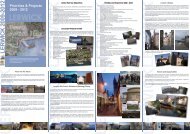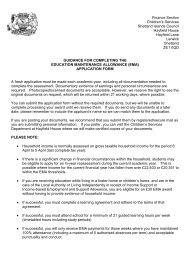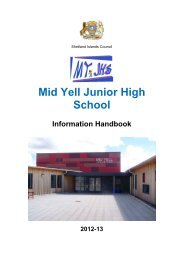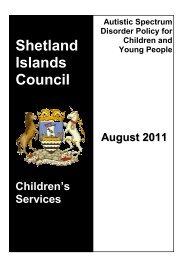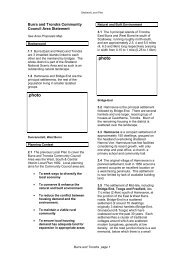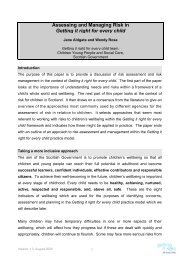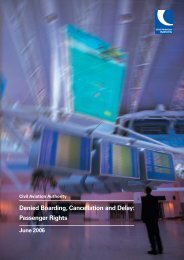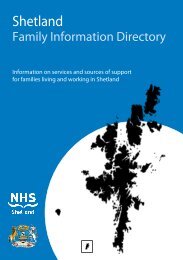Shetland Local Landscape Designation Review: Final Report
Shetland Local Landscape Designation Review: Final Report
Shetland Local Landscape Designation Review: Final Report
You also want an ePaper? Increase the reach of your titles
YUMPU automatically turns print PDFs into web optimized ePapers that Google loves.
3.27 The result of this step indicates where sub-character areas, of high landscape<br />
quality, occur within LCUs, and whether these can be associated with<br />
adjacent areas in other LCUs to form potential candidate <strong>Local</strong> <strong>Landscape</strong><br />
Areas.<br />
Application of Practical Criteria<br />
3.28 The second part of the analysis of the Area of Search is the application of<br />
‘practical criteria’. The Guidance emphasises the need for ‘integrity’ in terms<br />
of the coherence and size of candidate areas for designation. The following<br />
practical criteria were therefore applied to inform choices over inclusion or<br />
exclusion:<br />
<br />
<br />
<br />
identity and coherence;<br />
suitable size;<br />
other designations; and<br />
boundary features.<br />
3.29 It is important that candidate <strong>Local</strong> <strong>Landscape</strong> Areas represent recognisable<br />
landscape units, with a logical theme or focus: for example a group of hills, a<br />
coastal landscape, or a crofting landscape. Very small areas of identified<br />
quality have not been taken forward in isolation, since it would be impractical<br />
to apply policy at this scale. Similarly, where larger areas of high quality are<br />
identified, the candidate <strong>Local</strong> <strong>Landscape</strong> Areas have been defined to focus on<br />
the core landscapes which most merit designation.<br />
3.30 In terms of other designations, it was agreed with SIC that the new<br />
designation should not overlap with the existing National Scenic Area.<br />
3.31 The aim has been to select strong and permanent boundaries for the<br />
candidate <strong>Local</strong> <strong>Landscape</strong> Areas where possible. These include roads and<br />
tracks, watercourses and water bodies, and coastal features. Other less<br />
permanent features, such as field boundaries, and topographic features such<br />
as ridgelines which define visual envelopes, have also been employed.<br />
3.32 Where there is a lack of obvious boundary features, it has been necessary to<br />
move outwards to the next available boundary, and to include areas of lower<br />
merit, rather than to move inwards and reduce the area of higher merit<br />
included within the candidate <strong>Local</strong> <strong>Landscape</strong> Area, particularly where this<br />
might have an impact on the integrity of the area in question.<br />
3.33 In some cases, the decision as to whether or not to include a specific area<br />
within a candidate <strong>Local</strong> <strong>Landscape</strong> Area was clear cut. However, most of<br />
the landscape is not so easily defined, and landscape quality is often variable at<br />
a detailed level. In many cases therefore, the decision required fine<br />
judgements to be made.<br />
3.34 The process of analysing the Area of Search and identifying candidate <strong>Local</strong><br />
<strong>Landscape</strong> Areas is set out in Section 8.<br />
<strong>Shetland</strong> Islands <strong>Local</strong> <strong>Landscape</strong> <strong>Designation</strong> <strong>Review</strong><br />
Land Use Consultants<br />
<strong>Final</strong> <strong>Report</strong> 15 October 2011



